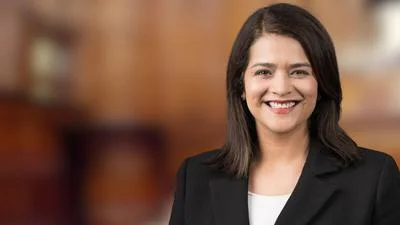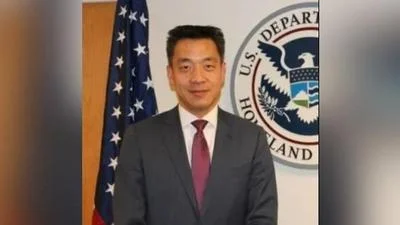Chicago Metropolitan Agency for Planning Environment and Natural Resources Committee met Nov. 7.
Here is the minutes provided by the committee:
Members Present: Lindsay Birt – Xylem, Keary Cragan – U.S. EPA, Jack Darin – Illinois Sierra Club, Martha Dooley – Village of Schaumburg, Aaron Durnbaugh – Loyola University Chicago, Danielle Gallet – Metropolitan Planning Council, Elena Grossman – BRACE-Illinois at UIC, Andrew Hawkins – Forest Preserve District of Will County, Paul May – Northwest Suburban JAWA, Ryan Peterson (for Tom Rickert) – Kane County, Mike Prusila (for Mike Warner) – Lake County Stormwater Management Commission, Deborah Stone – Cook County Department of Environment and Sustainability
Members Absent: Stacy Meyers – Openlands, Mike Sullivan – IDOT, Sean Wiedel – Chicago Department of Transportation
Staff Present: Brian Daly, Kate Evasic, Tony Manno, Doug Ferguson, Stephane Phifer, Amy McEwan, Greta Ritzenthaler, Nora Beck, Stephanie Levine, Agata Dryla-Gaca, Erin Aleman, Jason Navota, Melissa Silverberg, Simone Weil, Jesse Elam, Tina Smith
Others Present: Julia Linares, Ted Penesis, Laura Reilly, Angela Tovar
1.0 Call to Order
Chair Jack Darin called the meeting to order at 9:33 a.m.
2.0 Agenda Changes and Announcements
CMAP staff addressed issues some committee members have had receiving committee emails, which could be caused by unsubscribing from other CMAP newsletters. Staff asked members to let them know if they are having issues and offered to correct the problem.
3.0 Approval of Minutes—September 5, 2019
A motion to approve the minutes of the September 5 meeting was made by Paul May, seconded by Aaron Durnbaugh. The motion carried with all in favor.
4.0 Approval of 2020 Meeting Schedule – Kate Evasic, CMAP
Staff proposed the 2020 meeting schedule, continuing to meet bimonthly on the first Thursday of each odd month at 9:30 a.m., with the following exceptions: switching the January and July meetings to January 9th and July 9th respectively. The committee discussed the best time to meet in September near the Labor Day holiday.
A motion to approve the schedule was made by Martha Dooley, seconded by Ryan Peterson. The motion carried with all in favor.
5.0 LTA/Community Planning call for projects – Tony Manno, CMAP
CMAP and the RTA conducted a call for projects from September 17 to October 18, 2019, and received 81 applications from 70 different applicants. Staff gave an overview of the applications received, evaluation process, and timeline. Staff also solicited committee feedback on emerging trends in environmental planning and policy and additional criteria that should be considered during project application evaluation.
Assistance in outer ring suburbs. Members discussed the need for planning assistance, particularly for topics like water planning and wastewater treatment planning, in collar community suburbs where staff often lack resources and experience to undertake those projects. Tony Manno noted that geographic equity and representation from throughout the region are important factors in selecting projects. Members responded that CMAP has done a good job with geographic representation in the past.
Water planning. Members discussed national trends toward integrating water supply planning into comprehensive plans, and suggested that an integrated approach may offer a way for LTA to address water supply without the need to secure external funding for dedicated water plans. Members further noted that this approach would allow CMAP to produce good examples of water planning and to convene utility and other stakeholders through the planning process.
Regional stormwater planning. Members discussed the recent presentation from the Lake County Stormwater Commission on updates to stormwater standards and floodplain maps using new precipitation data, and asked whether CMAP could conduct a similar regional analysis through the LTA program. Tony Manno responded that it may be a good topic to raise during the Committee’s discussion of CMAP’s work plan to implement ON TO 2050’s environment recommendations.
Equity. Members pointed to recent presentations at national conferences of sustainability directors and public health officials that strongly emphasized equity in planning for the future. Staff responded that equity is also a major emphasis of ON TO 2050 and CMAP’s implementation work.
Implementation. In response to questions about how CMAP factors in implementation potential in its selection process, Tony Manno discussed how raising the topic of implementation at the earliest stages of project selection helps build momentum with communities. Jason Navota discussed how many communities apply for follow-up plans through LTA that implement key recommendations of previously completed LTA projects.
Climate vulnerability. Attendees discussed the possibility of using LTA to provide a hyperlocal focus on climate impacts, providing data on heat island effects and flooding, particularly where vulnerable populations are located.
Brownfields. Members asked whether the potential for brownfields redevelopment and reuse could be used as selection criteria, pointing out that communities whose plans for brownfield redevelopment are part of their overall community plans are more competitive for federal funding. Tony Manno responded that looking at the potential for implementation funding is something CMAP looks at, and offered the example of coordinating with MWRD on projects that can take advantage of their biosolids program.
Combining nearby applications. Members noted the large number of proposals within the City of Chicago and asked how CMAP evaluates them and whether CMAP ever works with applicants to try to combine multiple applications into a single project. Tony Manno described how CMAP coordinates project selection with the City’s Department of Planning and Development, Department of Transportation, and Department of Housing. CMAP does try to combine applications when it seems like the optimal approach, but it can be challenging due to the number of different partners involved.
Funding for capital improvements. In response to a question about whether LTA plans had led to funding for plan recommendations, Tony Manno spoke about CMAP’s goal of using local planning to create a pipeline of projects that can be funding through one of CMAP’s programming processes or other sources. Stephanie Levine said that in its analysis of the Rebuild Illinois program, CMAP identified $9 million in line item appropriations for LTA plan recommendations and an additional $9 million in nonspecific funds to communities that could be used to implement plan recommendations.
Climate mitigation. In response to a question about whether projects that promote electrification and other decarbonization strategies will be selected, Tony Manno said that because ON TO 2050 contains similar goals, these projects will be competitive.
Opportunity Zones. In response to a question about whether Opportunity Zones will be used as evaluation criteria, Tony Manno said staff will be looking at them in the analysis, but are not sure exactly how it will factor into decisions.
6.0 Capital bill overview – Stephanie Levine, CMAP
In June 2019, the State of Illinois enacted a package of legislation to fund transportation, water infrastructure, natural resources, school construction, affordable housing, and other projects. Staff provided context on the bill and described a unique tool that CMAP created to enable a transparent, user-friendly way to explore the funded projects.
Distribution of EV Registration Fees. Members asked whether the fee for registering electric vehicles will be distributed according to the same ratio as the motor fuel tax. Stephanie Levine responded that she believes the ratio is only for MFT, and that MVR fees do not go into the Transportation Renewal Fund. Erin Aleman said that IDOT has released tables that show the relationship. Staff offered to follow up with members, and confirmed that the $100 surcharge for electric vehicles goes to the Road Fund, not the Transportation Renewal Fund.
State Revolving Fund. In response to a question about whether the increased state money to the SRF meets the 20% federal match requirement or goes above it, Stephanie Levine responded that CMAP believes it is above the match requirement but that analysis could not definitively determine that based on the language.
Using the CMAP tool. Members discussed how they had used CMAP’s online tool to see what municipalities they work with had received funding. Stephanie Levine discussed the difficulty in making geographic comparisons based on the bill due to the discretionary funding that cannot yet be assigned to a particular location.
Updating the tool. In response to a question about updating the tool as funds are spent, Stephanie Levine said CMAP will not be updating the tool and is discussing the best way to track project progress with COMs and COGs.
Performance period. In response to questions about the period of performance and how many years’ funding is included, Stephanie Levine said that Rebuild Illinois features a six-year bond program and that, in the past, bonds have gone beyond that period. She also discussed how the current program is what has been authorized, but that actual spending will depend on revenues, bond markets, and other factors.
Geographic coverage of tool. Responding to questions about what the tool includes, Stephane Levine stated that all items from Rebuild Illinois are included, not just those in the CMAP region.
Transportation revenues. Members asked what discussions are taking place about replacements for the MFT as more EVs are introduced. Stephanie Levine responded that CMAP has done extensive policy research and discussion about future revenues, including discussing the potential for a road usage fee and working with partners to explore the equity implications. She stated that the increase to the MFT and its index to inflation in Rebuild Illinois is an important bridge to transitioning to a more user based system.
7.0 ON TO 2050 Environment Implementation – Nora Beck, Brian Daly, and Kate Evasic
Staff have begun to develop a multi-year work plan for implementing recommendations identified in the ON TO 2050 Environment chapter. Staff gave an overview of the work plan and led a discussion with the Committee to brainstorm and coordinate actions among regional partners for implementation of ON TO 2050 recommendations related to climate adaptation and mitigation. A summary of the main topics of discussion follows.
Committee assistance with ON TO 2050 implementation. The committee discussed the role of local governments in implementing ON TO 2050, CMAP’s role in tracking and publicizing local efforts that support the plan, the possibility of broadcasting case studies and local stories, and the availability of implementation matrices on the CMAP website.
CMAP’s environment work plan. The committee discussed the prominence of water and its relationship to climate and the ways mitigation and adaptation strategies are interrelated. Ideas the committee discussed include CMAP’s role in convening partners and working across local political boundaries, and its role in transportation (tracking metrics, setting standards, and programming funds).
How CMAP should approach taking action on climate mitigation and adaptation. The committee discussed concepts and priorities to frame the agency’s planning. Topics included integrating concepts of social capital into environmental planning and strategies to ensure commitment to climate mitigation goals from communities receiving CMAP adaptation assistance through capacity building and program requirements. The committee also discussed the possibility of creating an online reporting tool where regional partners can share their implementation actions and learn from one another’s efforts.
Synergies between organizations. The committee discussed how CMAP could work with large anchor institutions on coordination and communication, the use of incentive and awards programs, and the role CMAP could play coordinating reporting and data sharing. Examples of existing reporting that members believe CMAP and partners could leverage include the Greenest Region Compact and EPA Risk and Resilience Assessments.
CMAP’s position in the climate space. In response to a question about the unique role CMAP could fill in regional climate action, the committee discussed how the agency could communicate the need for climate action, lead long-range planning, identify “big solutions,” communicate the cost of inaction, and serve as a national voice for the region’s work.
8.0 Other Business
9.0 Public Comment
This is an opportunity for comments from members of the audience. The amount of time available to speak will be at the chair’s discretion. It should be noted that the exact time for the public comment period will immediately follow the last item on the agenda.
10.0 Next Meeting
The next meeting will be January 9 at 9:30 a.m. in the DuPage County conference room.
11.0 Adjournment
The meeting adjourned at 11:37 a.m.
https://www.cmap.illinois.gov/documents/10180/1072560/2020-01-09-ENR-3.0-Minutes-2019-11-07.pdf/1a88e9f8-ba9e-3cd8-e11d-981c273d2a2a





 Alerts Sign-up
Alerts Sign-up